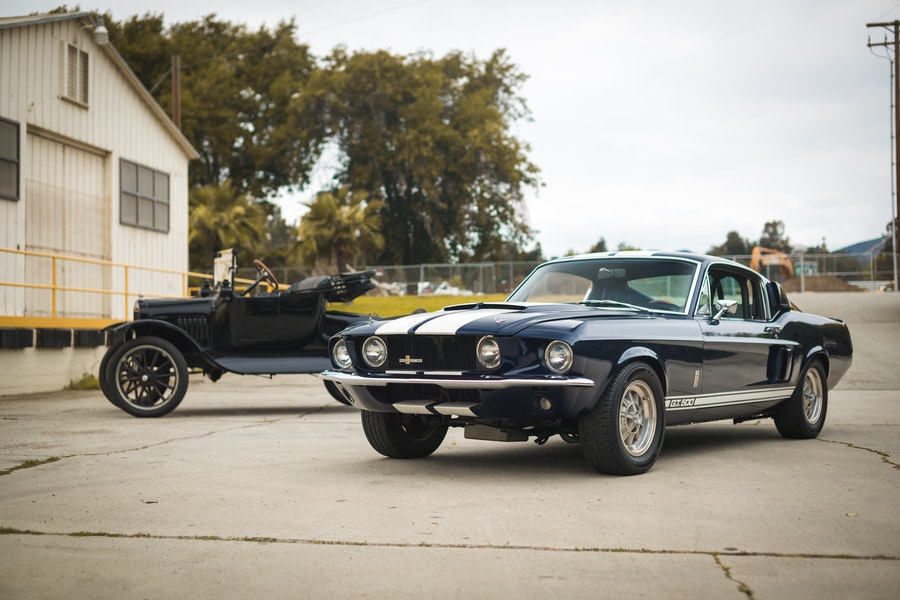This Month in Car History (October)
October holds a special place in automotive history, marking significant milestones that have shaped the industry we know today. From the introduction of iconic vehicles to groundbreaking technological advancements, this month celebrates the evolution of automobiles and their impact on society.
| Topic | Key Points |
|---|---|
| 1908: Ford Model T Launch | Introduction of mass-produced, affordable cars for the masses. |
| 1913: First Moving Assembly Line | Ford implements the moving assembly line, revolutionizing car manufacturing. |
| 1938: Volkswagen Beetle Production Begins | The Beetle becomes an iconic car worldwide, symbolizing reliability and design. |
| 1958: Introduction of Three-Point Seat Belt | Volvo enhances vehicle safety with a revolutionary seat belt design. |
| 1997: Thrust SSC Breaks Sound Barrier | First car to break the sound barrier, setting a new land speed record. |
As we delve deeper into these historical milestones, let's begin with the revolutionary launch of the Ford Model T and its impact on the automotive industry.
The Launch of the Ford Model T (1908)
In October 1908, the Ford Motor Company unveiled the Model T, a vehicle that would forever change the landscape of personal transportation. Prior to its release, automobiles were considered luxury items, accessible only to the wealthy. The Model T, however, was designed for the average consumer, thanks to Henry Ford's innovative mass production techniques.
These assembly line methods drastically reduced production costs, making cars affordable for the general public. The widespread adoption of the Model T not only mobilized a nation but also spurred economic growth and urbanization.
Key impacts of the Model T include:
- Democratization of automobile ownership
- Advancement of assembly line production
- Growth in ancillary industries like oil and road construction
The success of the Model T set the stage for further innovations in manufacturing processes, leading to the introduction of the moving assembly line.
Revolutionizing Production: The Moving Assembly Line (1913)
In October 1913, Ford introduced the moving assembly line at its Highland Park factory. This groundbreaking innovation transformed manufacturing by significantly increasing production efficiency and reducing assembly time from 12 hours to just 2.5 hours per vehicle.
Benefits of the moving assembly line:
- Increased production speed and volume
- Lowered production costs, reducing car prices
- Set a standard adopted by various manufacturing industries
This advancement not only boosted the automotive industry but also influenced global manufacturing practices, emphasizing efficiency and standardization.
Building on these production innovations, October also saw the rise of vehicles that would become cultural icons, such as the Volkswagen Beetle.
The Volkswagen Beetle: An Icon is Born (1938)
October 1938 marked the beginning of production for the Volkswagen Beetle in Germany. Designed by Ferdinand Porsche, the Beetle was intended to be an affordable car for the masses, mirroring the Model T's impact in America. Post World War II, the Beetle became globally recognized for its distinctive design and reliability.
Significance of the Volkswagen Beetle:
- Symbol of economic recovery in post-war Europe
- One of the longest-running and most-manufactured car models
- Cultural icon in various countries, including the United States
The Beetle's popularity demonstrated the universal appeal of reliable and affordable vehicles, influencing future car designs and marketing strategies.
As cars became more prevalent, the focus shifted towards enhancing safety features to protect drivers and passengers.
Pioneering Safety: The Three-Point Seat Belt (1958)
In October 1958, Volvo engineer Nils Bohlin introduced the three-point seat belt, revolutionizing vehicle safety. Recognizing its life-saving potential, Volvo made the patent freely available to all car manufacturers, significantly impacting global automotive safety standards.
Impact of the three-point seat belt:
- Dramatically reduced fatalities and injuries in car accidents
- Became a standard safety feature in all vehicles
- Highlighted the importance of safety innovations in the automotive industry
This commitment to safety set a precedent for future developments, including airbags and advanced collision avoidance systems, many of which are integral to modern collision repair techniques.
Pushing the boundaries of automotive performance, October also witnessed feats that tested the limits of speed and engineering.
Breaking Barriers: Thrust SSC Sets Land Speed Record (1997)
On October 15, 1997, the Thrust SSC, a British jet-propelled car, became the first land vehicle to break the sound barrier. Piloted by Andy Green, it achieved a speed of 763 mph in Nevada's Black Rock Desert, setting a new world land speed record.
Significance of Thrust SSC's achievement:
- Pushed the boundaries of automotive engineering and aerodynamics
- Inspired advancements in high-speed vehicle design
- Demonstrated the potential for innovation in automotive performance
This milestone showcased human ingenuity and the relentless pursuit of speed and technological excellence, influencing future generations of automotive engineers and enthusiasts.
Reflecting on these historical developments underscores the continuous evolution of the automotive industry. From manufacturing innovations to safety advancements and performance achievements, each milestone has left an indelible mark on car history.
Final Thoughts
October's rich history in automotive innovation reminds us of how far we've come since the early days of the Model T. The advancements in production, safety, and performance not only transformed the automotive industry but also enhanced the driving experience for everyone.
If you're passionate about cars or need professional services like auto painting or RV repair, feel free to contact Downtown Autobody. We offer expert collision repair and even provide free loaner cars to ensure your convenience.
